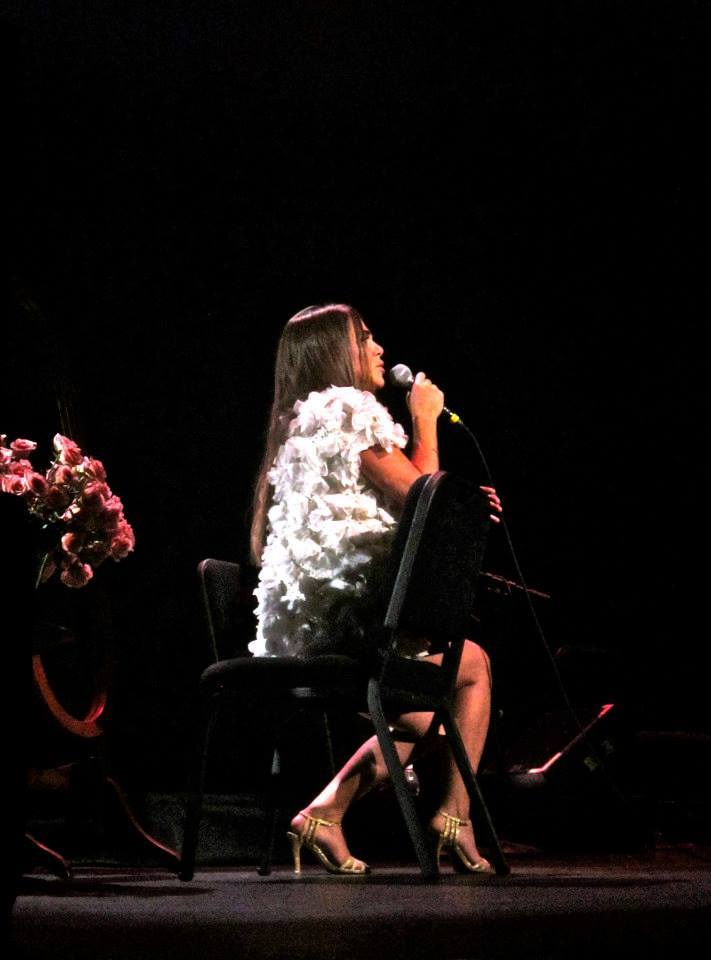To hear and see Gisela João is to be reminded of fado in its familiar glories, but also to be divested of its stereotypes. We remember, or learn, that fado can be cheerful as well as sad, that the feet can move as well as the body sway; that the deep emotion is restrained before it erupts; that even then it is kept almost inside, like tears held back after a few have escaped; that fado is for youth as well as age; and that those written recently, or today, have a strength analogous to the historical. She reminds us above all that fado takes its time. The great emotions erupt only when they hit the shore, although they are, before that point, filled with power even if deceptively gentle. To hear fado in its mournful key is to take passage on a boat and be lulled by the waves before the shipwreck.
I do not know Portuguese, aside from recognizing (or thinking that I do) certain words and phrases by analogy to the Spanish, but it is clear that fado speaks, as both song and music, of that which it sparks in the listener, of longing, perhaps loss, often love, but of a species of joy as well, whether about people, or places, or fado itself. There are few forms of song as profoundly tied to the sonorities of a particular language; it is hard to imagine it being sung without the sound in Portuguese that resembles the English “sh” but which lasts longer in the air after its release. João plays with this, when it occurs at the end of a line, pulling away the microphone and letting the “swish” linger like a charm. Such moments are emblematic of the delicacy of which she is capable, and of the taste with which she both “lets go” and asserts her dignity.
Her show at New Jersey Performing Arts Center had a few basic accouterments; a mirror and a chair before it, and a display of roses, one of which she fondled briefly, on Sunday night, in memory or hope, I do not know which. She sat, now and then, before the mirror, sometimes facing it, sometimes away (I assume that her reflection was visible from some parts of the house). The heels she started in she removed after a song or two, saying, in English, “they are not for me” and performed most of the show barefoot. This was important, because her movement had a particular affect, whether reflective or upbeat. She prepared for the lyric, frequently, with a sort of backward cross-weave of the feet, before, as the words asserted themselves, she arose, a petite young woman, to the balls of the feet, or the toes, as the song seized her. For the livelier numbers, she invited the audience to dance (none of us did, for the auditorium was not suited for it, and, in any case, all eyes were on her). The briskness of her own footwork had a folkloric simplicity that evoked the everyday release that is essential to life, whether it is difficult or easy.
She said, in fact, of fado that “to me it is just life,” not only the sadness or melancholy with which it is associated (the word in Portuguese, hard to translate exactly, is “saudade”). But still, those emotions are what drew most of us to fado, and the fact is that they cannot, really, be danced to. Nor does João do so at the most crucial moments, for what she is so terribly good at is the restraint and release and pulling back in of the emotion. This is as much psychology as artistic pattern, and in her it is fully expressed in body and voice. The emotion is at its strongest when it is retracted after the outburst, when her arms and hands pull it all the way into the chest. It is as though she shares it the most when everything in her would keep it from us.
Ricardo Parreira, Tiago Oliviera, and Francisco Gaspar accompanied João on guitar, viola, and bass, respectively. CD info and upcoming tour dates may be found here. For other New Jersey Performing Arts Center events, go here.
